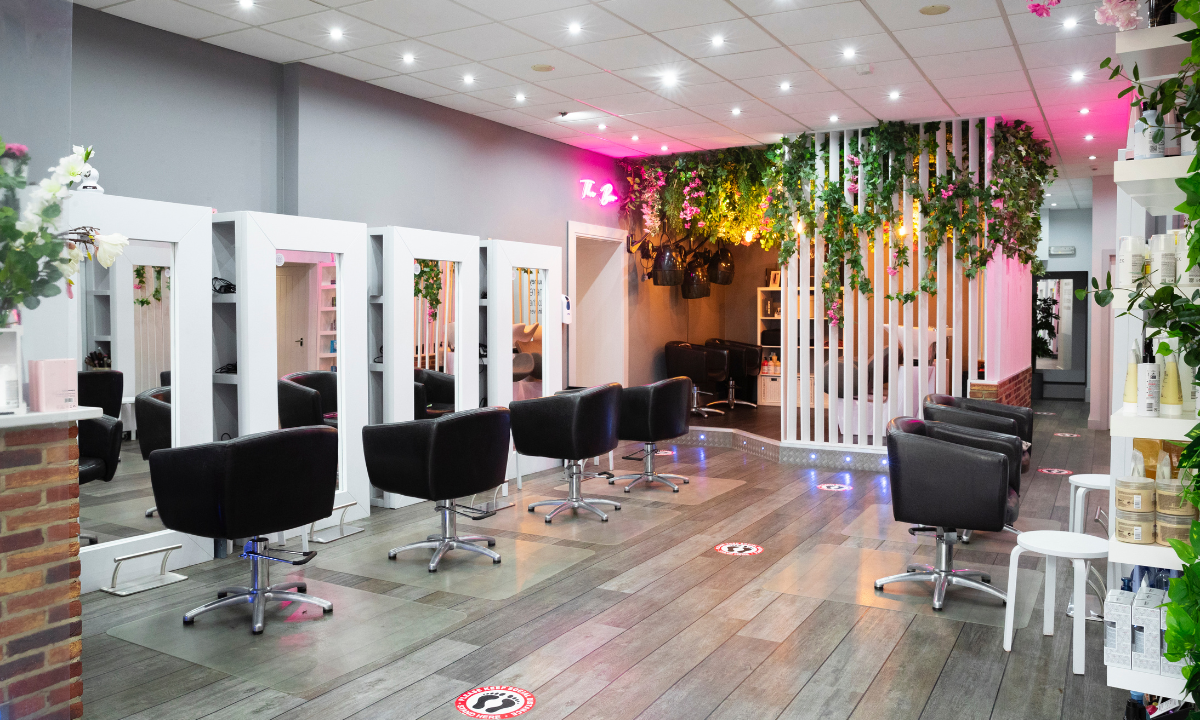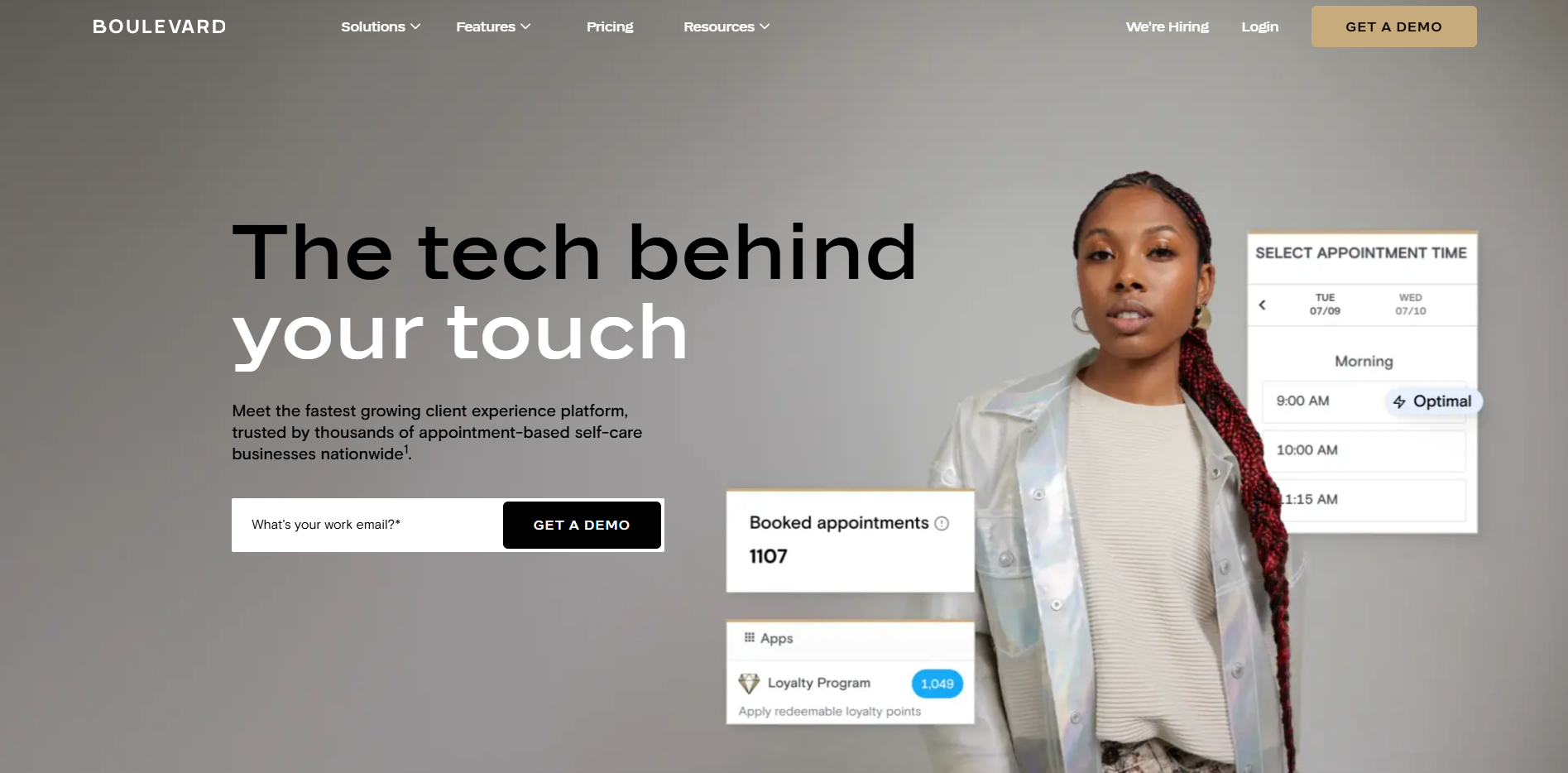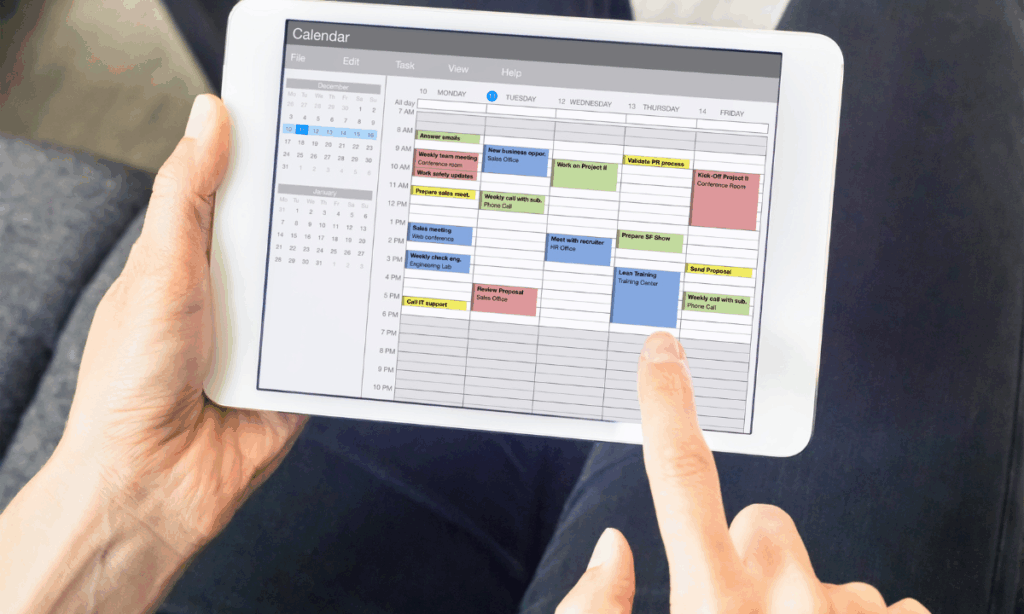As a salon owner, you have quite a few impactful decisions to make. Commission or booth rental? Are you closed on Sundays? What’s your policy on stylists trading hair services? But these choices pale in comparison to choosing your first salon POS or booking software.
The thing is, waiting to make a choice can get you in trouble fast. Suddenly, you’re juggling multiple apps and platforms just to track client notes and process payments.
But the worst thing you can do is choose an option at random and get locked into an expensive contract. That’s why I put together this guide on how to choose your first salon POS or booking software.
By the end, you’ll know exactly what features matter, what’s worth paying for, and how to avoid expensive mistakes. And if you’re wondering whether you need separate platforms or whether one platform can handle both booking and POS needs, you’ll get an answer to that too.
Why Your First Software Choice Matters More Than You Think
As hairdressers and salon owners, we’re well-versed in the idea of “making it work.” No matter what challenges a given day might present, as professionals, we persevere and forge ahead.
But this same approach is incredibly ineffective when it comes to choosing your software.
When you piece together multiple tools, it gets expensive fast. Between the time it takes staff members to update every tool, manually making sure data matches across every platform, and creating a seamless experience for clients, you’re spending a lot more than just the monthly fees for each tool.
What’s worse is that these problems will get more pervasive over time. The longer you try to make do with a mix of different tools, the harder it’ll be to someday upgrade to an all-in-one system.
And don’t forget about the costs to train all new staff members on your current system, plus the costs to retrain everyone if you eventually upgrade to something else.
So, as a salon owner, should you start with free tools and upgrade later? This can work sometimes, but in most cases, you’ll save yourself quite a bit of time, money, and headache by choosing a platform that can grow with your salon to match your needs.

Understanding Your Salon’s Software Needs
Now that you understand the potential pitfalls of piecing together multiple free tools, let’s talk about what your salon does and doesn’t need.
Solo Stylist/Single Chair
If you’re a solo stylist or renting a single chair, your must-have features include:
- Simple booking system
- Client-specific notes
- Mobile payment processing
These three features address your biggest needs without any expensive, unnecessary bells and whistles. But consider looking for these nice-to-have features too:
- Automated appointment reminders
- Basic sales and revenue reporting
- Retail/inventory sales and records
In terms of budget, anything above $50/month is likely providing features you simply don’t want or need. Plus, the more you spend on running your salon, the more clients you need to see monthly to cover your costs. As a solo stylist, especially if you’re just starting out, look for salon POS or booking software that meets these needs at this price point.
Small Team (2-6 Chairs) – Employee Model

If you have a small team of two to six chairs and you’ve chosen the employee model, your must-have features include:
- Staff permissions so each team member has their own account and privileges
- Shared calendar for all stylists
- Commission tracking
- Product inventory
The critical considerations here are making sure team communication is simple and that all team members have schedule visibility. Depending on how your salon operates, you might also want:
- Gift card functionality
- Customizable reports
- Online booking for clients to schedule their own appointments
A good budget for this type of salon is usually $100 to $300 a month, depending on which specific features you need.
Chair Rental/Booth Rental Model
If you’ve decided on a chair rental or booth rental model, you have some unique needs that other salon set-ups don’t have to consider. Your must-have salon POS or booking software features will include:
- Payment processing for each individual stylist
- Separate client lists for each stylist
- Private notes/formulas for each stylist
Other features that’ll likely benefit your daily operations include:
- Online booking and scheduling
- Automated client communication
- Reporting and analytics for each stylist
There’s also a potential pricing trap to be aware of here. Some platforms charge you a flat fee per location, no matter how many stylists you have. Others charge you a per-stylist fee, which can quickly add up to be a major expense.
Be sure to look for flat-rate or per-location pricing, and keep front of mind the fact that you need software that allows stylists to keep their clients and payments separate.
The 8 Crucial Features for Your First Salon Software
Now that you have a little more insight into the must-have features for each type of salon, let’s cover the eight crucial features that determine whether your first salon software is truly going to make your operations simpler.

1. Online Booking Without Client Login Required
Online booking has revolutionized our industry, but that doesn’t mean it always works perfectly. You see, clients hate friction. If they have to do any tedious work, like creating an account or remembering a password, they’re much less likely to finalize the booking.
So, check to see if the booking process for any specific software requires clients to create accounts. If so, how easy is the process? Is resetting the password quick and easy? Avoid platforms that feel sluggish or complicated in this regard.
2. Integrated Payment Processing with Deposit Tracking
There’s nothing worse than when a client’s paid deposit doesn’t sync with your POS or booking software. You need an integrated system that tracks both deposits and final payments. Any platform that requires manual reconciliation of deposits is likely going to cause you some headaches—and maybe even some negative reviews.
3. Client Profiles with History, Notes, and Formulas
Having a visit history for each client can supercharge your salon business. Whether it’s formula storage for color clients, haircut notes for a barbershop, or even just a history of past product purchases, this information is golden. Bonus points for any systems that allow photo uploads!
4. Shared Staff Calendar with Conflict Prevention
It’s critical to have real-time syncing across your shared staff calendar. Without this, schedule conflicts and double bookings can run rampant in the blink of an eye. This feature also prevents two clients from booking the same slot. And if you opt for a platform that gives team members mobile access, keeping the books organized will be that much easier.
5. Automated Text Reminders and Client Communication
Automated appointment reminders can slash your no-show percentage by up to 50%, and without having to pay a receptionist to play phone tag all day. Most platforms allow you to customize the reminder message so it feels warm and friendly instead of cold and robotic. Some also allow for two-way messaging, which keeps your stylists’ personal phone numbers protected.
6. Digital Intake Forms That Save to Profiles
With DIY hair color being more popular than ever, client intake forms and waivers are a must-have. At the same time, it can be so frustrating to start an appointment late because a client is still filling out paperwork. Look for digital intake form functionality so the client can complete it before they even arrive for the appointment.
7. Waitlist Management for Last-Minute Openings
Nobody likes a gap in the middle of their workday—especially when it eats into their paycheck. But manually texting clients to fill cancellations can eat up time. Look for software with automatic waitlist client notification so your staff can spend more time performing services, less time on their phones.
8. Basic Reporting (Even If You Think You Don’t Need It)
The simple truth is, you can’t grow something if you aren’t measuring it. So, even if you’re a solo stylist, be sure to choose a platform with basic reporting. The key ones to look for are:
- Revenue by service
- Client retention
- Staff performance (if applicable)
These reports are also a lifesaver during tax season!
Software Comparison: Which Platform Fits Your Salon?
Below is a table breaking down the must-know details of four very popular salon POS and booking software. Use this to determine what makes the most sense to start with, based on your needs.
| Feature | Square | Vagaro | Mangomint | Boulevard |
| Best For | Solo/micro salons | Small teams on budget | Growing salons | Established salons |
| Monthly Cost | $0 base + per transaction fee | $23.99/mo for one stylist | $165+ per location | $176+ per location |
| Payment Processing | 2.6% + 15¢ | 2.6% + 10¢ | 2.45% + 15¢ | Starting at 2.65% |
| No-Login Booking | ✓ | ✗ | ✓ | ✓ |
| Deposit Tracking | Limited | ✓ | ✓ | ✓ |
| Client Formula Storage | Basic notes | ✓ | ✓ | ✓ |
| Staff Calendar | ✓ | ✓ | ✓ | ✓ |
| Automated Reminders | ✓ (limited) | ✓ | ✓ | ✓ |
| Digital Intake Forms | ✗ | ✓ | ✓ | ✓ |
| Waitlist | ✗ | ✓ | ✓ | ✓ |
| Membership Management | Limited | ✓ | ✓ | ✓ |
| Chair Rental Features | Basic | Good | Excellent | Excellent |
| Reporting Depth | Basic | Good | Advanced | Advanced |
| Learning Curve | Easy | Moderate | Moderate | Moderate |
| Customer Support | Limited | Good | Excellent | Excellent |
| Contract Length | None | Month-to-month | Typically annual | Monthly or annual |
Understanding the True Cost of Your First Salon POS or Booking Software
It’s important to know that the monthly cost you pay for salon POS or booking software isn’t the only fee you’ll be paying. You’ll also likely pay:
- Hardware costs (card readers, tablets, receipt printers)
- SMS fees (text reminders may cost extra per message)
- Payment processing fees on each transaction
- Training time for staff members
- Premium feature add-ons
So, how do you determine if a specific platform is truly worth it in terms of ROI? Use these formulas:
- Monthly Software Cost + (Processing Fees) + (Hardware/12 months) = Total Monthly Cost
- Time Saved in Manual Tasks (hours) × Your Hourly Rate = Monthly Value Increased
- Bookings from Better System (estimate conservatively) × Average Service Price = Additional Revenue
- If (Monthly Value + Additional Revenue) > Total Monthly Cost = Worth It!
What to Avoid with Your First Salon POS or Booking Software
Now that you have clear guidance on how to choose your first salon POS or booking software, let’s cover the red flags to watch out for.

1. No Clear Pricing on Website
When software doesn’t have clear pricing on its website, this usually indicates a steep price. Often, you’ll be pressured into booking a demo and saying yes on the call before you have any kind of pricing laid out in black-and-white. Always request a full pricing breakdown in writing before booking.
2. Long-Term Contracts for First-Time Buyers
As a first-time buyer of salon POS or booking software, you don’t have a lot of insight into your preferences yet. You need month-to-month flexibility while you learn what you actually need. That said, contracts can save you money, and sometimes there are options if you don’t wind up loving the software. Thoroughly read any contract before signing.
3. Poor Customer Service Reputation
For your first system, one of the most important factors is being able to get support. But software websites aren’t always the most forthcoming about what hours support is available. Do some independent research on forums like Reddit to see what people say when it comes to customer service for each software.
4. Requires Multiple Systems to Function
This is unacceptable because it’s the exact same problem you set out to solve. If you have to connect three or four different apps while paying for them, how is that any better than doing the same with free platforms? Start with an all-in-one that can handle bookings, payments, and client notes.
5. Dated Interface Your Clients Will Hate
Ultimately, your appointment booking page is part of your brand. It’s how you make a good first impression on potential clients. If they find the system clunky, confusing, or dated, they’ll click the back button and find someone else to work with. If you find yourself thinking the demo looks clunky, your clients will likely feel the same.
Setting Yourself Up for Success
Now that you have clarity into how to choose your first salon POS or booking software, let’s talk about how to set yourself up for lasting success.
Before You Buy
- Before you officially purchase, be sure to:
- Take the free trial or demo seriously by testing with real scenarios you regularly experience
- If you work with other stylists, have at least one of them test it to get a different perspective
- Book yourself a few test appointments as if you were the client
First Week Checklist
- Import existing clients and their notes/formulas
- Set up all the services you offer with realistic timing
- Block out personal time and breaks on the appointment calendar
- Configure automated reminder messages to sound like your brand
- Test the checkout process from end-to-end, not just with services, but retail products and gift cards too
Training Your Team (If Applicable)
- Schedule dedicated training time outside of business hours
- Create simple how-to guides for common tasks like collecting payment and rebooking appointments
- Decide if you or anyone on your team wants to be the “power user” who stays in the loop on new features and updates
Your Action Plan
Understanding how to choose your first salon POS or booking software comes down to three factors:
- Your business model
- Your must-have features
- Your budget reality
Start by picking your top two platforms based on this guide. Sign up for free trials or demos and fully utilize them—book test appointments, process sales, and have your team try the checkout process. You’ll know which system feels right quicker than you might expect.
As for the single most important factor when choosing your first salon software? Integration. Everything working together in one place eliminates the chaos of juggling multiple systems and creates the professional client experience that keeps your calendar full.
You don’t need the most expensive platform on day one! You need the right platform for where you are now, with room to grow. Start with a solid trial, and you’ll thank yourself later when you’re running a smooth operation instead of fighting your software.
- The 5 Best GlossGenius Alternatives for Hairdressers - December 13, 2025
- Zenagen vs MONAT: Which One Delivers Better Long-Term Results? - December 8, 2025
- Best Hair Salon Management Software for Managing and Tracking No-Shows - December 4, 2025

